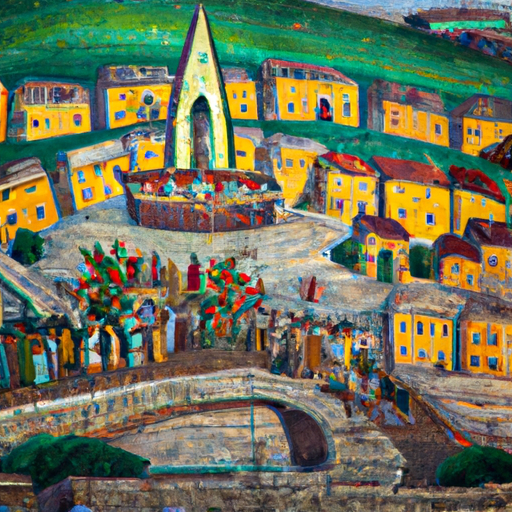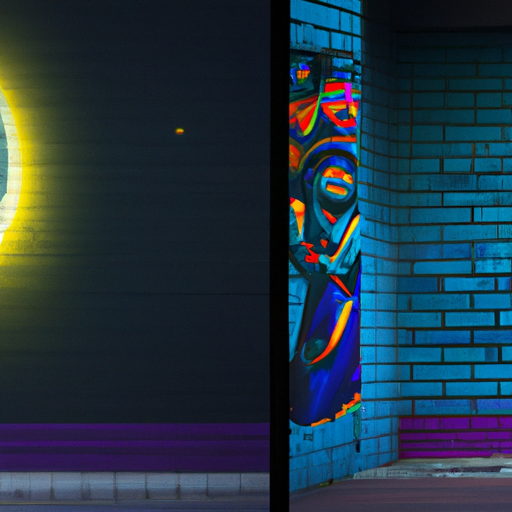Discover the vibrant hues and creative expression that come alive on the walls of Jerusalem, a city steeped in history and culture. This blog post delves into the thriving street art scene in Jerusalem, exploring its origins, influences, and the artists who breathe life into the city's streets through their works.
Unveiling the Canvas: How did Jerusalem's Street Art Scene Begin?
Jerusalem's street art scene has emerged as a vibrant and powerful form of artistic expression. It has captivated both locals and tourists alike, transforming the city's walls into mesmerizing works of art. But how did it all begin? The roots of Jerusalem's street art scene can be traced back to the early 2000s, when a handful of local artists started experimenting with graffiti and street art. These pioneers saw the streets of Jerusalem as their canvas, a space where they could express themselves freely and challenge societal norms.
The artistic movement gained momentum as more artists began to join in, pushing the boundaries of traditional art forms and exploring new techniques. Jerusalem's unique blend of history, culture, and spirituality provided a rich backdrop for artistic inspiration. The city's diverse communities and complex political landscape also served as catalysts for artistic dialogue and expression.
As the street art scene grew, it began to gain recognition from the local community and authorities. Walls that were once considered eyesores began to be seen as valuable pieces of art, contributing to the city's cultural landscape. Local businesses and organizations started commissioning artists to create murals, further fueling the growth of the street art scene.

A panoramic view of a colorful mural depicting Jerusalem's history on a city wall
Who are the Artists Behind the Art? – A deeper look into the minds that shape Jerusalem's streets
The artists behind Jerusalem's street art scene are a diverse and talented group, each with their unique stories and perspectives. Many of them are local artists who have grown up in the city, deeply connected to its vibrant history and complex dynamics. They bring their personal experiences and cultural backgrounds to their artwork, infusing it with a sense of authenticity and depth.
Some of these artists have formal art education, while others are self-taught. Regardless of their background, what unites them is their passion for using art as a means of expression and communication. They are driven by a desire to challenge societal norms, spark conversations, and provoke thought through their artwork.
These artists often draw inspiration from Jerusalem's rich cultural heritage, blending traditional motifs with modern techniques. They explore themes such as identity, spirituality, and the ongoing Israeli-Palestinian conflict, using their art as a platform to amplify marginalized voices and shed light on pressing social issues.
Collaboration and community engagement are also important aspects of the street art scene in Jerusalem. Artists often come together to create murals and organize events that celebrate the power of art to bring people together. They view their work not only as individual expressions but also as a collective effort to transform public spaces and foster a sense of unity and belonging.
"Art as a Voice" – How do Jerusalem's street artists express social and political commentary?
Jerusalem's street artists use their art as a powerful tool to express social and political commentary. They believe that art has the ability to transcend language barriers and reach a wide audience, making it an ideal medium for voicing their opinions and concerns. Through their murals and graffiti, they tackle a range of issues, including the Israeli-Palestinian conflict, social inequality, and human rights.
One way in which these artists express their social and political commentary is by depicting powerful symbols and imagery. They use recognizable icons and metaphors to convey their messages, invoking emotions and sparking conversations. For example, images of doves and olive branches are often used to symbolize peace and unity, while barbed wire and walls represent division and conflict.
Furthermore, the artists employ a variety of artistic techniques and styles to convey their messages effectively. They experiment with different colors, textures, and compositions to create visually compelling and thought-provoking artwork. By combining elements of realism, abstraction, and street art aesthetics, they capture the attention of passersby and prompt them to reflect on the underlying social and political issues.
Additionally, the artists often incorporate text and slogans into their artwork to reinforce their messages. They use catchy phrases, quotes, and hashtags to make their statements more memorable and shareable. By doing so, they not only express their own views but also engage the public in a dialogue, encouraging them to question and challenge existing power structures and social norms.

A provocative piece of street art commenting on political issues, drawing passersby into a thoughtful pause
Is it Just Graffiti, or Something More? – The transformative power of street art in Jerusalem
Street art in Jerusalem is more than just graffiti; it holds a transformative power that goes beyond mere aesthetics. Here are three key aspects that highlight the significance of street art in the city:
- 1. Beautification and Community Engagement:
Street art has the ability to transform mundane and neglected spaces into vibrant and visually appealing areas. Blank walls and deserted alleyways become canvases for artists to create captivating murals that breathe life into the surroundings. This not only beautifies the city but also fosters a sense of community engagement. Residents and visitors alike are drawn to these art-filled spaces, creating a shared experience and a sense of pride in their neighborhood. - 2. Cultural Preservation and Identity:
Street art plays a crucial role in preserving and celebrating Jerusalem's diverse cultural heritage. Artists often draw inspiration from the city's rich history, religious symbolism, and cultural traditions. They incorporate motifs and symbols that resonate with the local community, reinforcing a sense of identity and belonging. By representing different cultures and narratives, street art becomes a powerful tool for cultural preservation and storytelling. - 3. Social Activism and Empowerment:
Street art has become a platform for social activism and empowerment in Jerusalem. Artists use their work to shed light on social issues, advocate for justice, and give voice to marginalized communities. They address topics such as gender equality, LGBTQ+ rights, and environmental sustainability, sparking conversations and promoting positive change. Street art empowers both artists and viewers, encouraging them to question societal norms and take action for a better future.
Jerusalem's street art scene is a testament to the city's resilience, its diverse cultural tapestry, and the transformative power of art. It's a world where ancient history and modern expression collide, offering an alternative narrative of Jerusalem that is as compelling as it is vibrant. Whether you're an art enthusiast or a casual observer, the city's street art scene is sure to leave an indelible impression. For more info about Jerusaelm art and Jerusalem hotels click here.